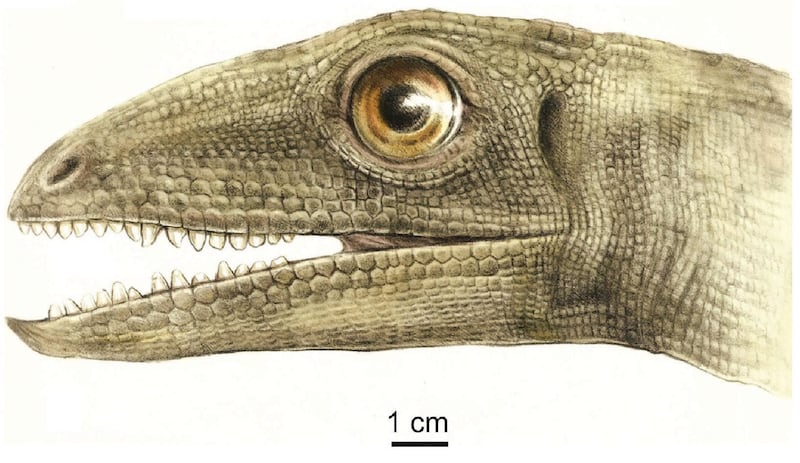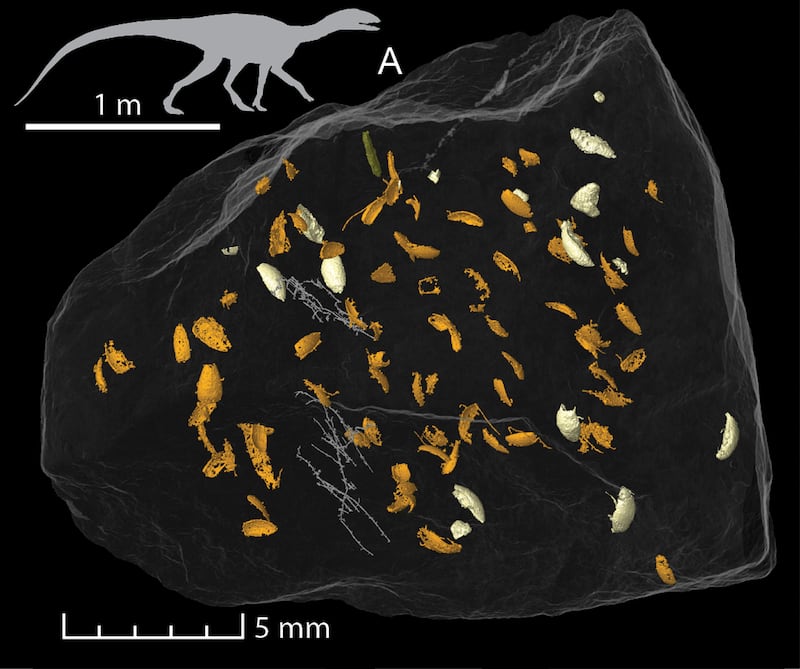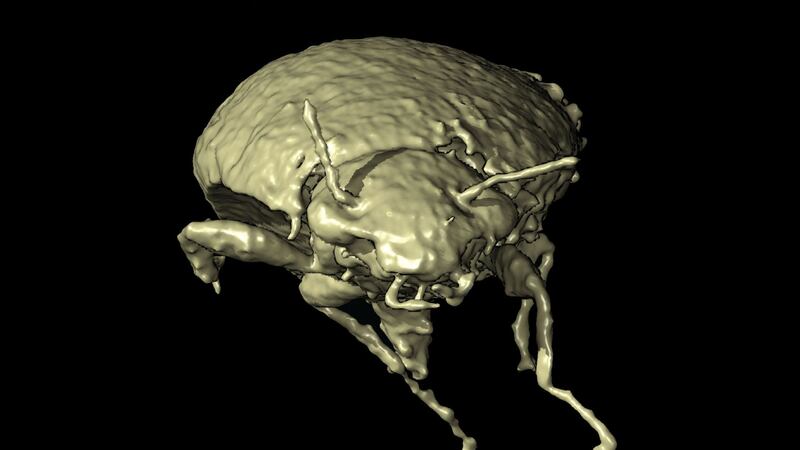A new extinct species of tiny beetle that lived around 230 million years ago has been found in the fossilised droppings of a creature believed to be a dinosaur ancestor.
Researchers say that the beetle, named Triamyxa coprolithica, is the first ever insect to be described from fossil faeces.
The team said they were “absolutely amazed” by the exceptionally preserved insects – with their legs and antennae fully intact within the remains.
The ancient droppings, also known as coprolites, are believed to have come from Silesaurus opolensis – a small, beaked dinosaur ancestor that weighed around 15kg and lived in Poland during the Late Triassic period around 230 million years ago.

Martin Qvarnstrom, a palaeontologist at Uppsala University in Sweden, who is first author on the paper published in the journal Current Biology, said: “We were absolutely amazed by the abundance and fantastic preservation of the beetles in the coprolite fragment.
“In a way, we must really thank Silesaurus, which likely was the animal that helped us accumulating them.”
The scientists believe the beetle lived in a semiaquatic or humid environment, where it became food to the dinosaur-like reptile.
Silesaurus, meanwhile, may have used its beak to scoop up insects from the ground, much like modern birds.
However, the researchers believe that the Triamyxa beetle was too small to have been the only targeted prey and may have been ingested alongside larger beetles – but the remains of those insects did not end up in the droppings in a recognisable shape.

Grzegorz Niedwiedzki, also a palaeontologist at Uppsala University and one of the authors on the paper, said: “I never thought that we would be able to find out what the Triassic precursor of the dinosaurs ate for dinner.”
The researchers used a technique known as microCT scan to examine the remains.
They said their work could open the door into further research on fossilised droppings and shed more light on not only on insect evolution, but also on the diet of extinct creatures that lived millions of years ago.
Mr Qvarnstrom said: “There are heaps of things you can study based on fossilised droppings but it had been hard to understand what to do with it, hard to recognise what is inside, and hard to draw conclusions from it, but now there are tonnes of data.
“The ultimate goal is to use the coprolite data to reconstruct ancient food webs and see how they changed across time.”








